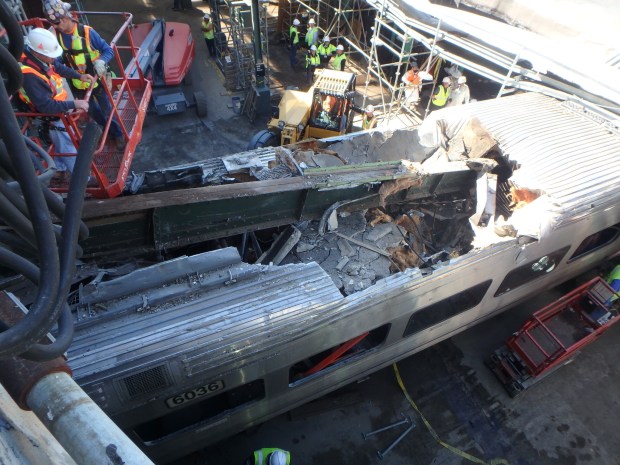I agree, I'm not sure the news media did interview the conductor or any of the train crew. I'm not sure the crew would have been made available to the media. Often they're not. For many reasons, crews are often instructed not to talk to the media, that any comments or information have to come from management, from whomever is designated to speak with the media. I'm not sure exactly how the number of passengers still on the train is relevant, but I think the only way the media might be able to get that information would be to request it from NJ Transit.
Anyway the NTSB in their preliminary report
(link) did say they interviewed the crew including the conductor. Below is some of what the conductor told them:
On the day of the accident, the train consist had four cars when it normally has five cars. The cars were very crowded, with people standing in the vestibules and crowding the cars. It was so crowded the conductor was unable to collect fares. The conductor did not notice anything unusual about the speed of the train as it approached the terminal, but said that he was focused on the crowds of passengers at that time. After the accident, the conductor helped evacuate the train and walked through it to ensure all passengers had exited.
Again, I'm not too sure how this is relevant, how many people were on the train when it arrived at Hoboken, but note the conductor is quoted as saying, as the train "approached the terminal...he was focused on the crowds of passengers
at that time..." As I mentioned, having ridden 1614, it usually was pretty crowded by the time it made the last stops along Rt. 17 (I think Carlstadt is the final inbound stop before Secaucus Jct.). I haven't ridden 1614 in three or four years but as I recall maybe one-third of the riders would get off at Secaucus, maybe less. There's a number of reasons for that, the primary reason being Pascack Valley Line commuters tend to be people who work in the Wall Street area and they stay on board until Hoboken and then take PATH to the World Trade Center stop. That still seems to be true of most of the diesel lines out of Hoboken headed for Bergen County. Bergen County has extensive commuter bus service into the PABT on 42nd Street and most commuters headed for Midtown Manhattan usually took the bus. That has changed since the connection with Secaucus Jct. opened but for many riders the alternative is not that attractive. It not only involves a transfer from a lower level train to an upper level train, the connecting train is often pretty crowded.
When I've found it's not true is on weekends. Then there's usually a handful of people on board when a Pascack Valley or Main Line/Bergen County train leaves Hoboken and a crowd waiting at Secaucus Jct. But comparing weekends and weekday rush hours is like two different railroads.
